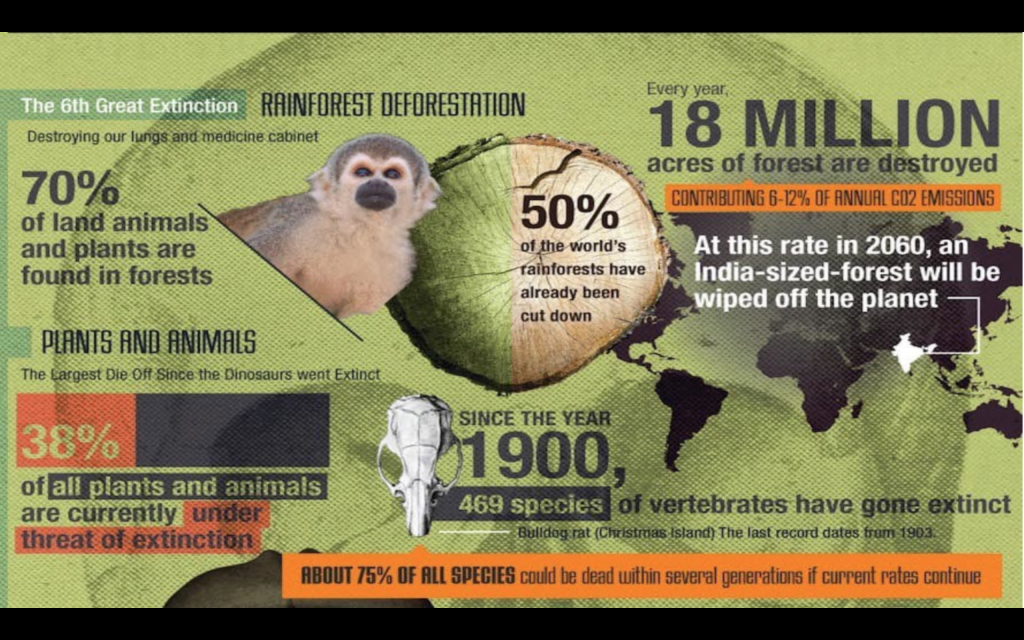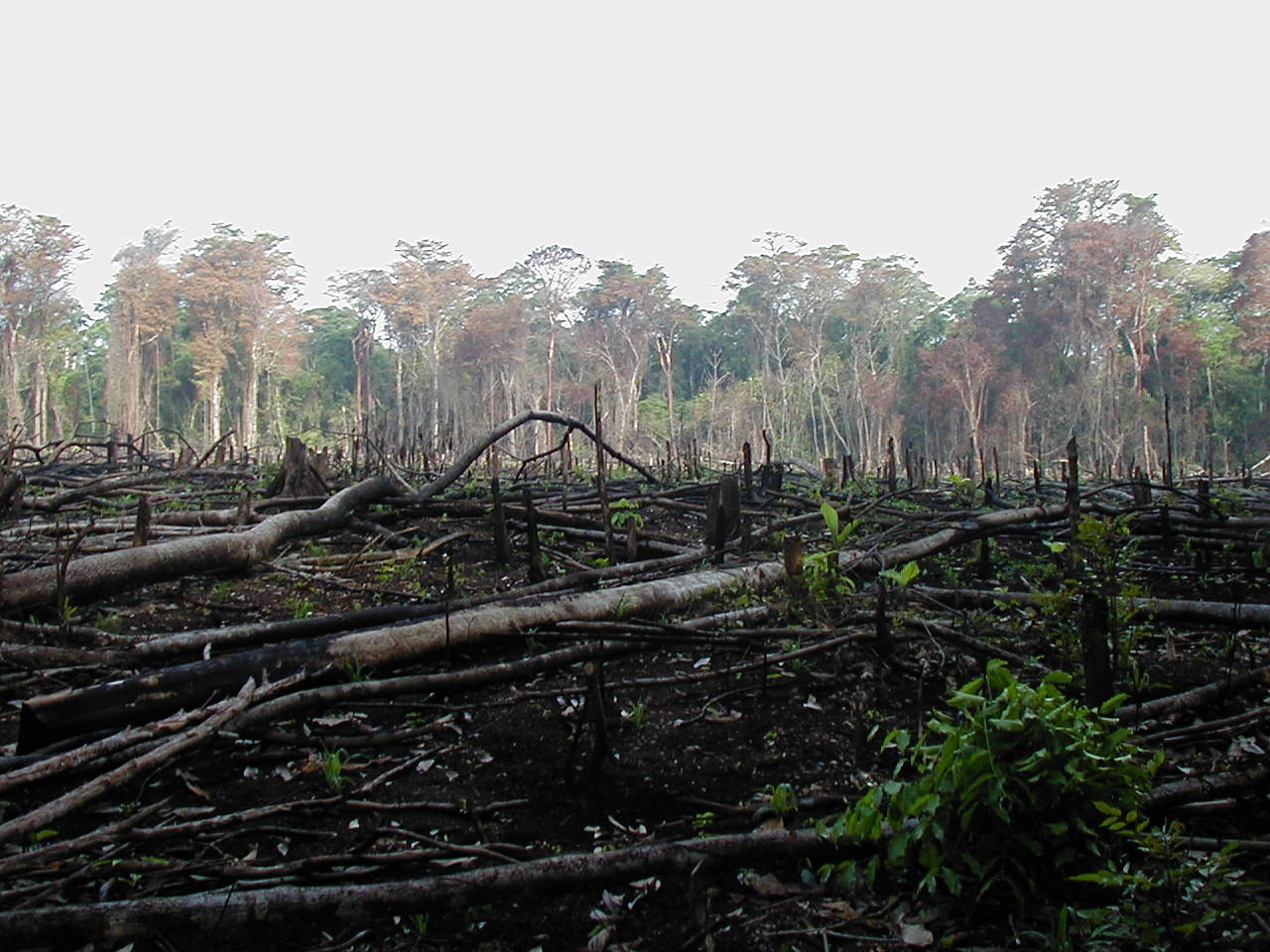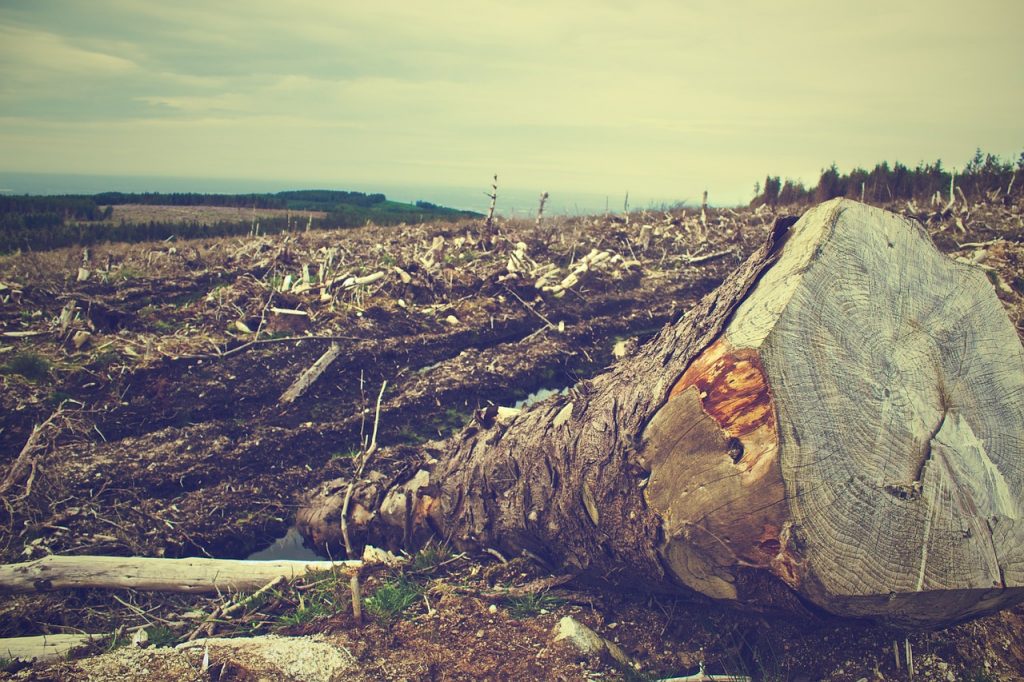Human activities have contributed to massive exploitation of ecosystems, far beyond what is sustainable. Practices such as industrial-scale agriculture, livestock grazing, logging, and mining have lead to widespread habitat loss and depletion of these resources.

Video Summary: All of the resources that humanity depends on ultimately came from the land. However, conversion or degradation of this land to extract these resources at ever-increasing rate is not sustainable. Today’s society must protect the land that is still in its natural state, and work to restore as much degraded land as possible, so as to provide future generations with a renewable source of these resources.
Deforestation
Thirty percent of the earth’s surface consists of forests[1]. Twenty percent of the world’s oxygen is produced in the Amazon forest alone[2]. However, these critical regions of the world are rapidly being destroyed.

This forest in Guatemala was cut down and burned so that the land could be used to grow crops. [3]
One and a half acres of forest is cut down every second. This is the equivalent of 36 football fields per minute. [4]
Video Summary: The expansion of palm oil plantations in Indonesia has lead to the destruction of the rainforest. Deforestation on such a massive scale has hit the region’s orangutan population incredibly hard, and they are in danger of extinction if the destruction of their habitat continues.
Video Summary: Indonesia’s air has become hazy from the smoke created by the burning of rainforest to clear land for palm oil plantations.
Video Summary: Deforestation has hidden long-term effects, too. Loss of trees plays a major role in climate change, as forests help absorb heat, exchange atmospheric carbon dioxide for oxygen, and even influence precipitation patterns. While it is clearly not feasible for humanity to stop using wood and paper products altogether, individual-level changes in consumption could reduce the demand for them, and slow logging to a sustainable level.

